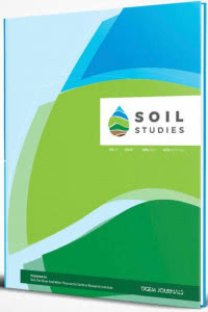Combination of remote sensing and kriging to improve soil salinity mapping in the Hmadna plain (Algeria)
The plain of Hmadna is located in the western part of the plains of Cheliff (North-western of Algeria) with a surface of more than 10,000 ha. The salinity mapping at the scale of whole plain is difficult to be performed because it would be necessary to collect and analyse a large number of samples in order to reach a good spatial estimate. The satellite's remote–sensing capability, with the quantity of information which it offers and its broad field of view, seems to be the most suitable tool to chart salinity, when the spectral data are combined with a reduced number of soil samples., The necessary precondition for the operational use of this technique is the existence of a good correlation between the data measured directly from soil samples with that resulting from the remote-sensing. The objective of this work is to show the importance of using optical sensors with a very high spatial and spectral resolution in the improvement of the mapping surface layer soil salinity. In the first part of this paper we develop a relationship between the remote-sensed data (very high resolution) and the measured salinity of ground samples (as expressed by sample electrical conductivity (EC), through statistical analysis (Ordinary Kriging) to create a salinity index just in the sample area for this dataset. Then in the second part of the paper, we apply this developed relationship to the whole of the WorldView-2 image set, to extrapolate a soil salinity map for the whole area.
Combination of remote sensing and kriging to improve soil salinity mapping in the Hmadna plain (Algeria)
The plain of Hmadna is located in the western part of the plains of Cheliff (North-western of Algeria) with a surface of more than 10,000 ha. The salinity mapping at the scale of whole plain is difficult to be performed because it would be necessary to collect and analyse a large number of samples in order to reach a good spatial estimate. The satellite's remote–sensing capability, with the quantity of information which it offers and its broad field of view, seems to be the most suitable tool to chart salinity, when the spectral data are combined with a reduced number of soil samples., The necessary precondition for the operational use of this technique is the existence of a good correlation between the data measured directly from soil samples with that resulting from the remote-sensing. The objective of this work is to show the importance of using optical sensors with a very high spatial and spectral resolution in the improvement of the mapping surface layer soil salinity. In the first part of this paper we develop a relationship between the remote-sensed data (very high resolution) and the measured salinity of ground samples (as expressed by sample electrical conductivity (EC), through statistical analysis (Ordinary Kriging) to create a salinity index just in the sample area for this dataset. Then in the second part of the paper, we apply this developed relationship to the whole of the WorldView-2 image set, to extrapolate a soil salinity map for the whole area.
